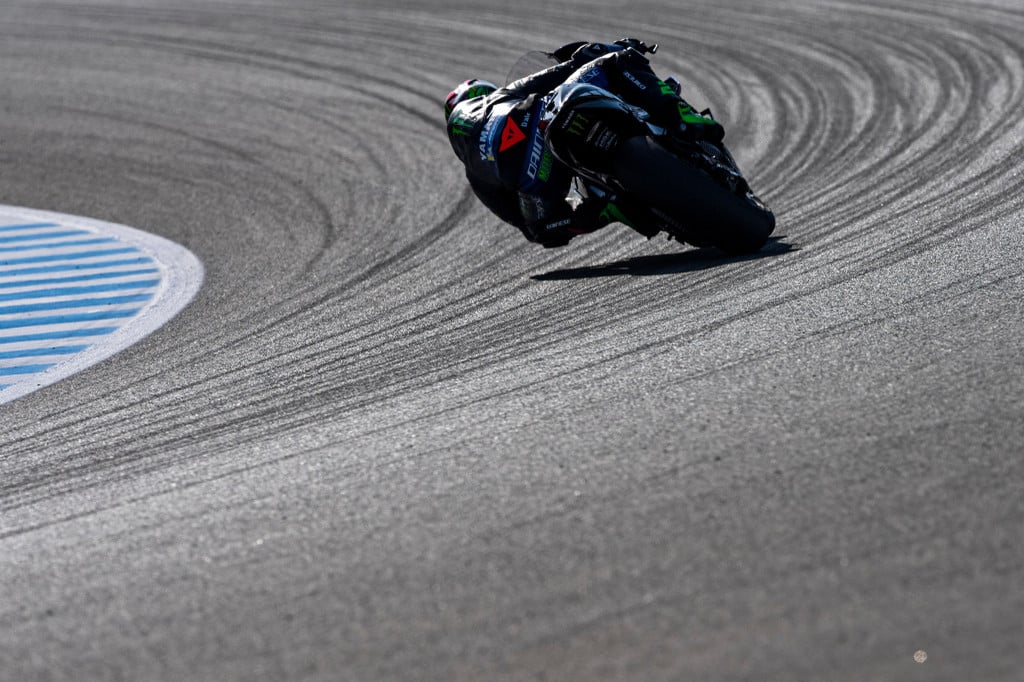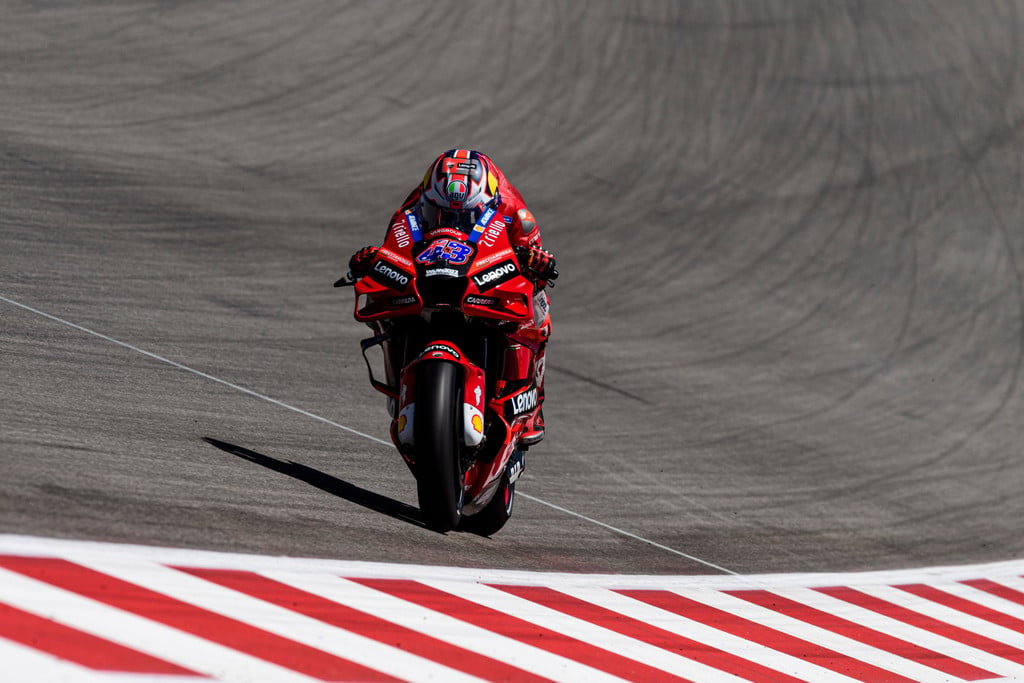If speed could be depicted in mechanical terms, it would definitely look like a motorcycle and thinking about speed on two wheels, well, nothing can outdo MotoGP™ racing: 300 HP driving a mass of just over 150 kg, all contained in an extremely advanced, aerodynamic and efficient package. It's not hard to see why MotoGP™ riders, capable of driving extreme vehicles like these, are seen as superhuman.
Speaking of MotoGP™, you may be interested in reading a short guide on how a classic race weekend works, such as the one that takes place every year at Mugello (for 2022, it’s the weekend of May 27, 28 and 29 – if you’ve never seen it live, we strongly advise you do: It’s a unique, unforgettable experience for every great aficionado).
One of the most popular circuits on the entire schedule, Mugello has been the stage of many incredible battles, such as the one between Valentino Rossi and Loris Capirossi in 2006, Marc Marquez and Jorge Lorenzo in 2016, or – more recently – Danilo Petrucci, Marc Marquez and Andrea Dovizioso in 2019. If you didn’t manage to see them or can’t remember them, you can always find the highlights on YouTube: It's worth it.
First of all, let's see how the 2022 MotoGP™ scoring system works. The winner of the race is awarded 25 points, second place earns 20 points, third place 16 points and fourth place gets 13 points. Fifth place obtains 11 points and down from there each place gets one point less, with fifteenth place gaining only one point. Of course, the Championship’s winner is the one with most points at the end. There are 21 races scheduled in 2022, of which seven have already been held before the Italian Grand Prix – Mugello is the eighth stage.
The weekend starts on Friday with two free practice sessions, both of 45 minutes each, called FP1 and FP2. Saturday opens with the third free practice session, the FP3, also lasting 45 minutes, while the FP4 sessions last half an hour. The FP4 sessions are immediately followed by the qualifying sessions, held in two 15-minute phases.
The first phase, called Q1, features the riders who ranked from the eleventh position onward in the combined standings of the first three free practice sessions (to be clear, this means that each driver’s best lap in the FP1, FP2 and FP3 sessions is considered; the FP4 session is used to try out different strategies related to race distance, rather than to set what is termed a ‘time attack’) and establishes the positions on the starting grid from the twelfth place onward. The two riders with the best Q1 time automatically enter the Q2 sessions, in which they race against all the top ten drivers from the combined standings, to determine the line-up of the first twelve positions.
Sunday starts with a 20-minute warm-up session (shortened to 10 minutes for Moto2 and Moto3), which is followed, a few hours later, by the main race. The number of laps depends on the length of the circuit on which the race is run – generally, the total distance covered in MotoGP™ racing is around 110 km, while is lower for the other categories.
The MotoGP™ technical regulations are rather complex and in line with the increasing technological level of the motorcycles taking part in the competition. The range of rules encompasses the various racing disciplines on the track, down to details inherent to the technical development of the motorcycles themselves. That said, just knowing the most important rules is enough to understand what happens on race weekends and be able to easily follow the running commentary.

This year, the rules include a limit on the number of engines used: Up to eight engines for all 21 races (although the eighth can be used from the nineteenth race onward). Further, limitations on the tires have also been introduced, to cap the amount of sustainable spending. In particular, in agreement with Michelin – the sole MotoGP™ class tire supplier – each team has 22 tires available for the whole weekend, up to 10 front and 12 rear ones. The latter are subdivided as follows: Maximum six of specification A (soft), four of specification B (medium) and three of specification C (hard).
One thing you might not know is that as well as being required to wear a leather suit, helmet, gloves, back protector and boots, all MotoGP™ professional riders (including Moto2 and Moto3 ones) must wear suits equipped with airbags, which were made mandatory in 2018. All riders are required to wear them in all races, including wildcard ones, i.e. competitions dedicated to those who compete in individual races without being registered for the entire championship.
Indeed, knowing that airbags are mandatory in MotoGP™ should also make you understand how important it is to equip yourself with an effective airbag device every time you get on your motorcycle, not just on the track but also on short trips. The ultimate airbag version for track motorcycles is the Dainese D-air® system fitted on our Mugello RR D-air®, the flagship model in the racing suit range.
The Mugello RR D-air® suit, always available for purchase in both standard and fully customizable Dainese Custom Works versions, is the same model that MotoGP™ professional riders use on the track every race weekend, and features the same D-air® airbag technology and the same technical solutions. This is also true for helmets, such as our Pista GP RR, as well as for our Full Metal 6 gloves and our Axial D1 boots: All the garments worn by Dainese-AGV riders in MotoGP™ racing are accurately replicated for motorcycle enthusiasts and can be purchased at any authorized dealer.

As you may have guessed, Dainese has been part of MotoGP™ since its inception. And this for a simple reason: Track racing is the perfect test bench to develop innovative technologies and test materials and designs in the most extreme environment, and with the most demanding testers.
Every rider needs to feel free and easy while riding, and therefore also well protected, as a truly free performance is determined by the confidence acquired in training as well as from feeling safe. After all, we’re pretty sure this is what you also want when you ride, in any situation.
Whether on the road or on the track, Dainese's goal is always the same: To offer you the best level of safety in a lightweight, comfortable and technological garment.